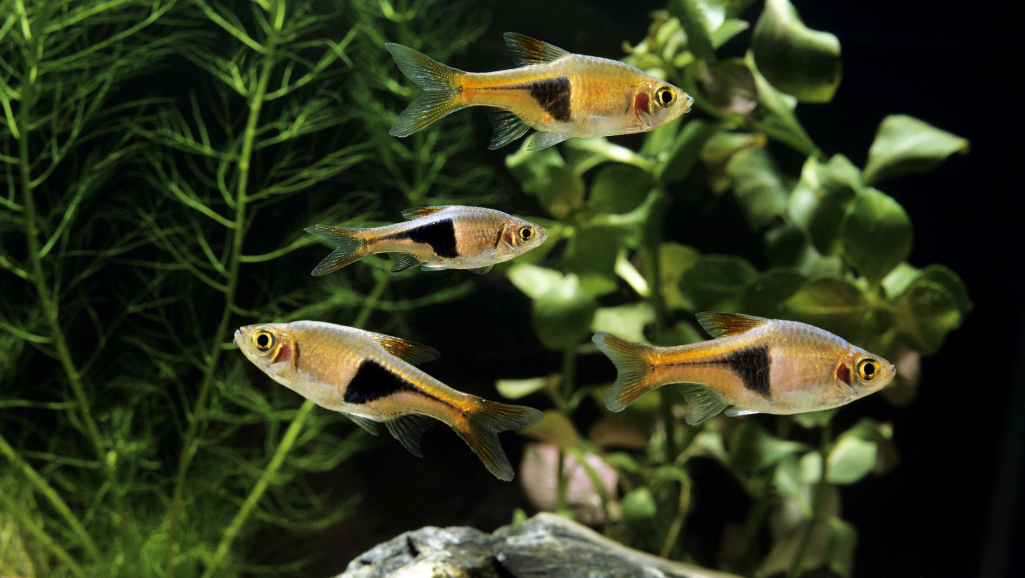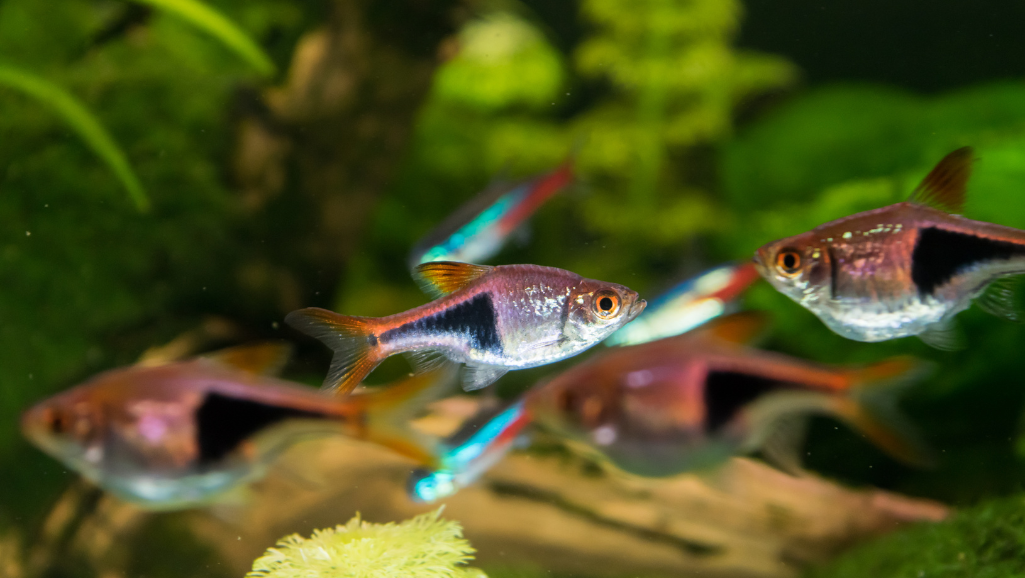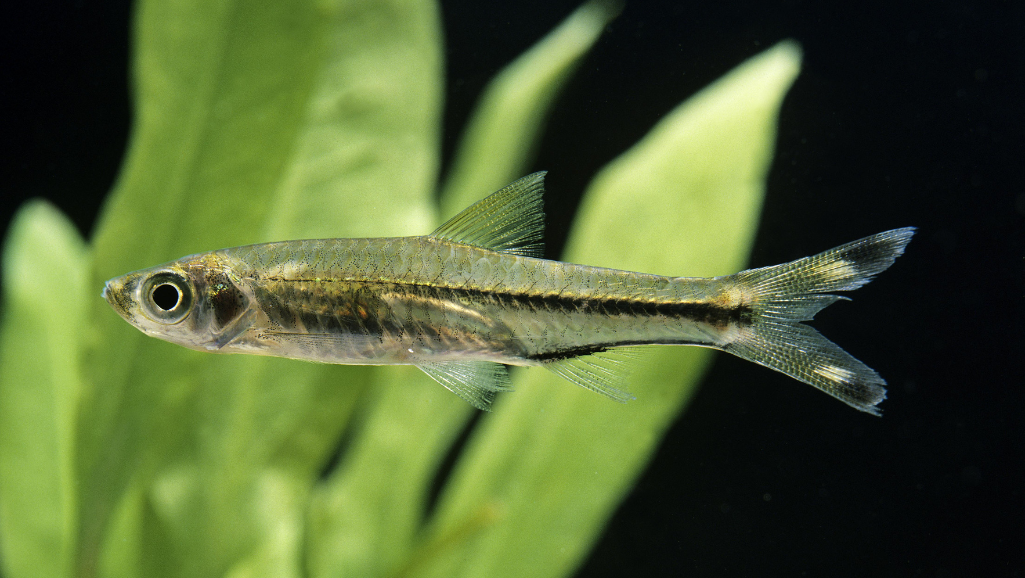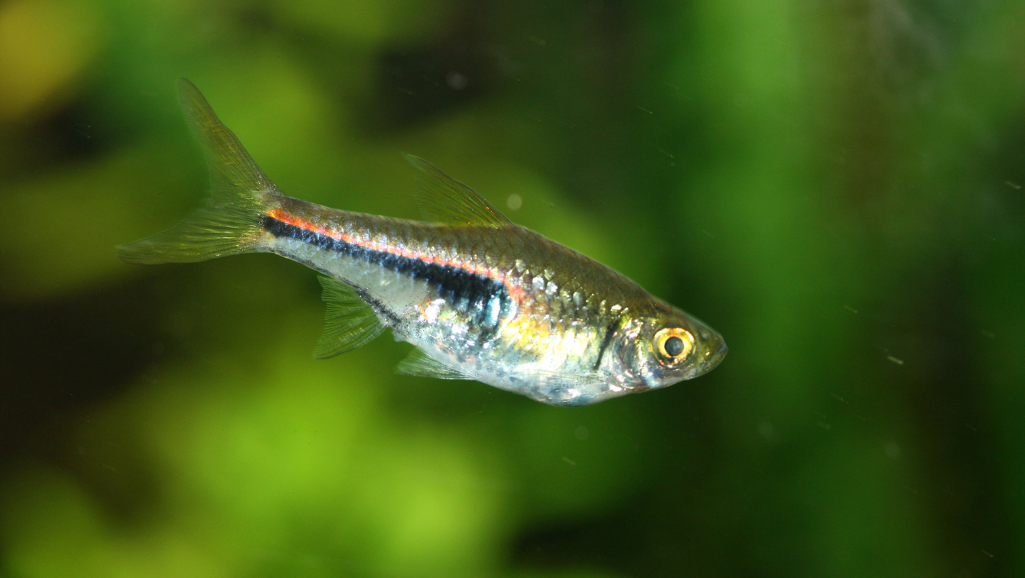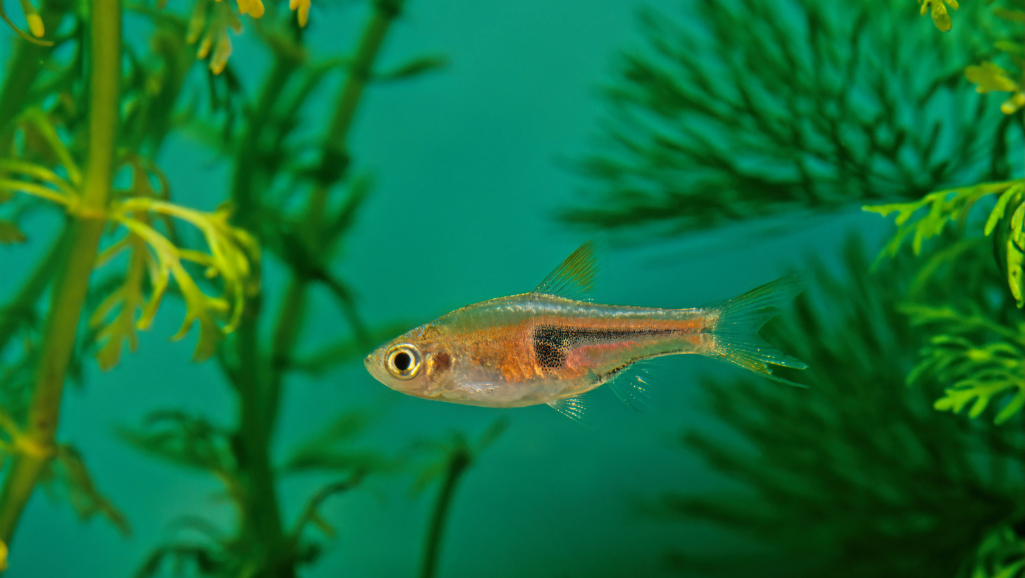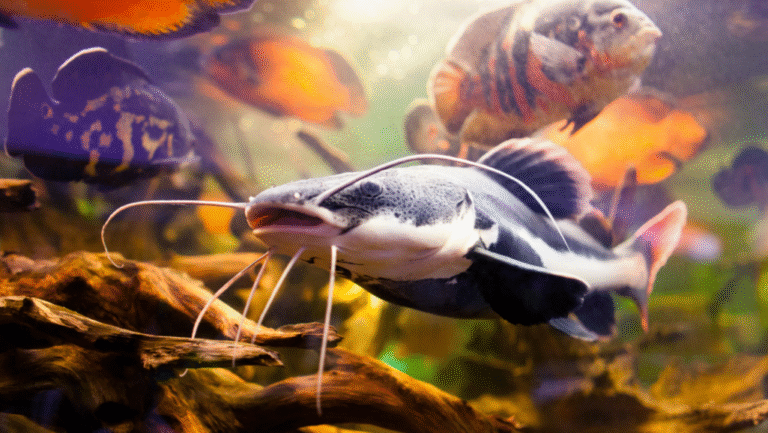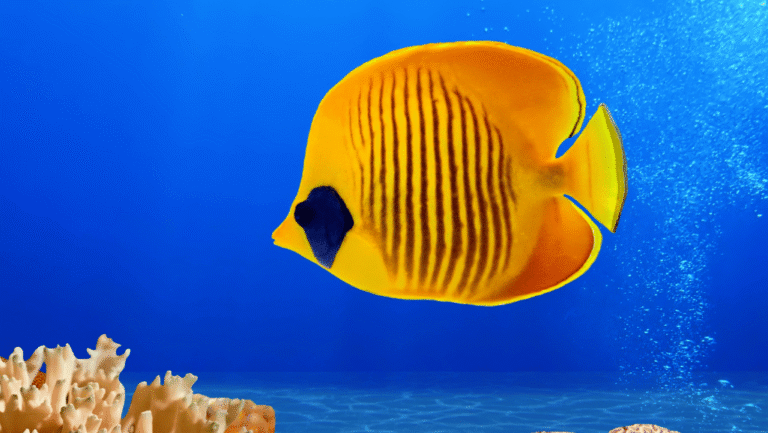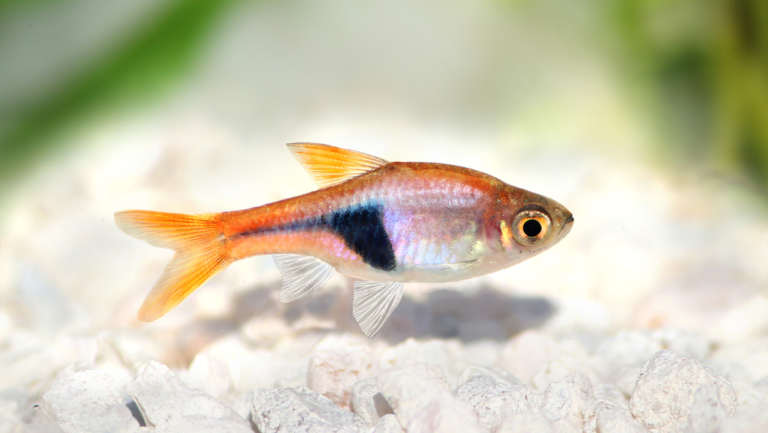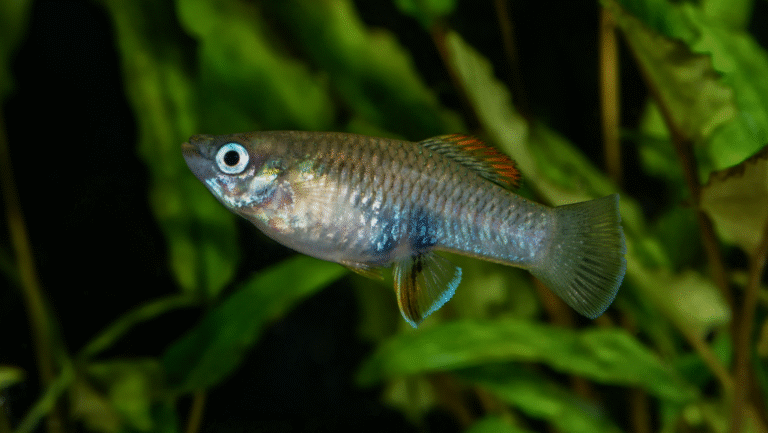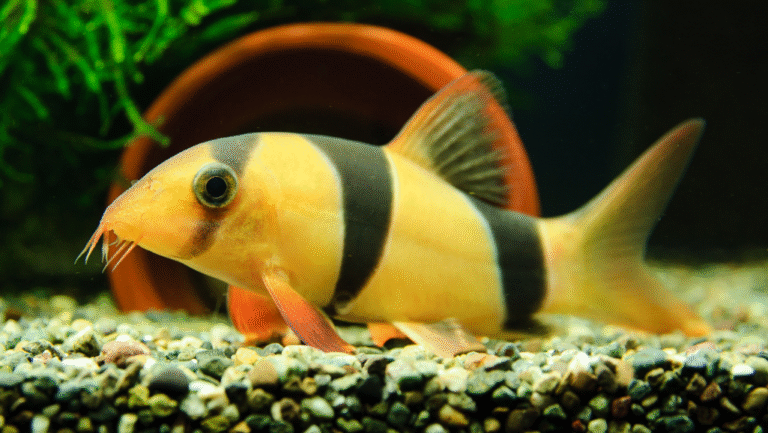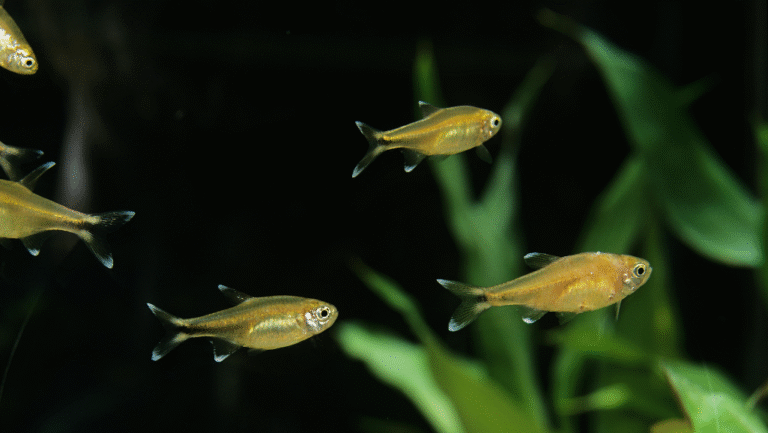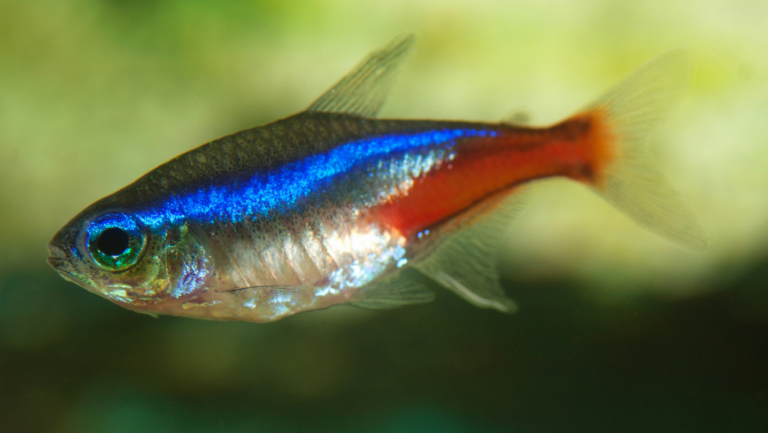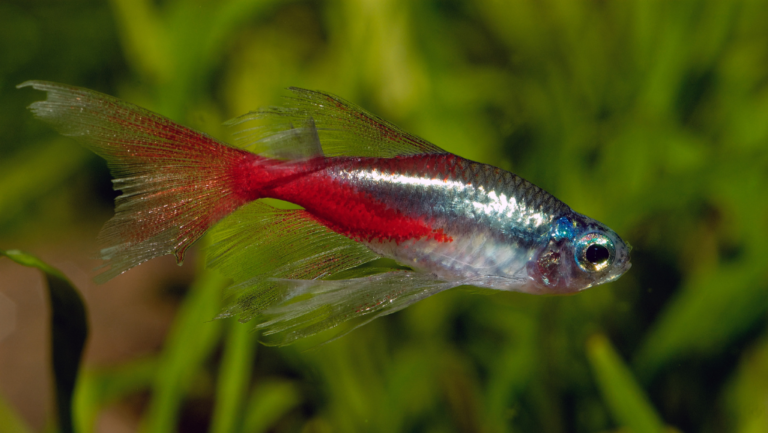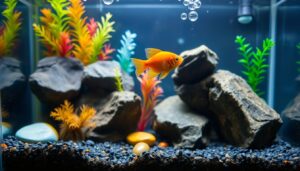The Espei Rasbora, also known as the Lambchop Rasbora, is loved for its calm nature and bright colors. They are small but add a lot of beauty to an aquarium. To keep them happy, it’s important to create a healthy Espei Rasbora habitat.
These fish look best with live plants, bringing a touch of Southeast Asia to your home. They are social and do well in groups of 8 to 10. This helps them stay stress-free and behave naturally.
Keeping the water just right is key. The pH should be between 6.0 and 8.0, and the temperature should be between 73 and 80°F. This makes sure they are comfortable.
Espei Rasboras get along well with other peaceful fish like tetras and bettas. Adding them to your tank can make it more lively and diverse. For more information, check out this article.
To keep Espei Rasboras healthy, focus on three main things: clean water, the right tank size, and good living conditions. A 10-gallon tank is a good size for a small school. This gives them enough room to swim and play.
Key Takeaways
- Espei Rasbora maximum size reaches approximately 3 cm.
- They are best kept in schools of 8 to 10 for optimal social interaction.
- Maintaining water parameters within specific ranges (pH 6.0 – 8.0, GH 1 – 15, TDS 18 – 179) is critical for Espei Rasbora care.
- The ideal temperature spans from 73 to 80°F to promote health and activity.
- Lifelong vibrancy and longevity are attainable, with an average lifespan of up to 5 years in well-maintained tanks.
- For the most natural and pleasing environment, live aquatic plants are the preferred decor.
- Research and resourceful planning are essential for successfully maintaining Espei Rasbora habitats in home aquariums.
Overview of Espei Rasbora Species
The Espei Rasbora species, also known as the Lambchop Rasbora, is a colorful fish for aquariums. They come from Southeast Asia, like Thailand and Vietnam. They are perfect for aquarium lovers who want to create a natural home for them.
Natural Habitat and Distribution
Lambchop Rasboras live in slow streams and ponds with lots of plants. They like soft, acidic water that looks yellowish-brown. This is because of the decaying plants around them. To keep them healthy and colorful, it’s important to create this kind of environment.
Physical Characteristics
Espei Rasboras are known for their bright bronze scales and a unique “lambchop” shape on their sides. They grow to about 1 inch long. Males are more colorful than females. Keeping a big group of them makes for a beautiful sight as they swim together.
Behavioral Traits
Espei Rasbora behavior is peaceful and active, making them great for community tanks. They love to school, needing at least 8 to 10 to feel safe. This not only looks good but also makes them happier and healthier.
By mimicking their natural habitat, aquarists can enjoy the beauty and calm these fish bring to their tanks.
Setting Up the Ideal Aquarium
Creating the perfect home for Espei Rasboras is more than just looks. It’s about understanding their natural habitat and behavior. They thrive in a tank that closely matches their native Thailand and Cambodia.
Tank Size and Dimensions
Espei Rasboras are active swimmers. They love swimming in the middle to top of the tank. A 10-gallon tank is the minimum recommended size.
This size allows for a small school of six fish. It’s perfect for their social needs. The tank should be at least 22 inches long and 12 inches wide. This gives them enough room to swim freely.
Water Conditions and Parameters
Espei Rasboras need soft water with a pH of 7.2. The water temperature should stay around 76 degrees Fahrenheit. This keeps them comfortable, just like their natural habitat.
Water should have low nitrate levels and gentle flow. This mimics the calm streams of Southeast Asia. Use a hang-on-back filter to keep the water clean and aerated without too much turbulence.
Substrate and Decor Suggestions
The tank should have a dark substrate. It looks good with their bright colors and feels like home. Live plants like Java Fern or Anubias add to the natural look.
Driftwood provides hiding spots, which helps reduce stress. For lighting, choose soft options that match their native waters. Add floating plants to soften the light and create shade.
By focusing on the right tank setup and water conditions, you can create a great home for Espei Rasboras. This setup will make your aquarium peaceful and your fish healthy and active.
Social Behavior and Tank Mates
Knowing how Espei Rasbora behavior works is key for those wanting a peaceful community tank. These fish are known for being calm and adding color to any tank. We’ll look at how they interact and who they like to be around, helping your tank thrive.
Ideal Community Tank Setup
Espei Rasboras love being in a group tank. They need soft, acidic water and lots of plants for hiding. The water should be between 72° to 79° F (22° to 26° C) and slightly acidic, between 6.0 to 7.0 pH.
Having at least six Espei Rasboras in a school is best. It helps them feel safe and reduces stress.
Compatible Fish Species
- Guppies and Mollies: These fish are calm and get along well.
- Neon Tetras and Cardinal Tetras: They’re small and need similar water conditions.
- Dwarf Corydoras: These fish live at the bottom and are a good match for the Espei Rasboras.
Aggression Levels and Hierarchies
Espei Rasboras are very calm and don’t fight much. They live peacefully together, making them great for tanks with different fish. This makes it easy to keep a diverse tank without stress.
In short, Espei Rasboras are perfect for a calm, lively aquarium. By understanding their behavior and who they get along with, you can create a happy, healthy tank for all.
Feeding and Diet Requirements
It’s key to feed your Espei Rasbora right to keep them healthy and colorful. Knowing what to feed and when helps them stay at their best Espei Rasbora size.
Types of Food for Espei Rasbora
- High-quality flake foods or micro pellets
- Live foods such as artemia and daphnia
- Frozen foods including bloodworms
- Occasional treats of blanched vegetables
These foods give Espei Rasboras a balanced diet. This keeps them colorful and active.
Feeding Schedule and Portions
Feeding Espei Rasboras often in small amounts is best. This keeps them healthy and the water clean. Make sure they can eat it all in three minutes.
- Morning: A pinch of flake food or micro pellets
- Midday: Small portion of live or frozen food
- Evening: Another serving of flakes or pellets
This feeding plan makes sure they get enough food all day. It also keeps the tank clean.
Health and Disease Management
Keeping Espei Rasboras healthy is key for their long life and bright colors in home tanks. Good disease management and regular aquarium health care are vital. They help avoid common problems that can harm these sensitive fish.
Common Health Issues
Espei Rasboras are usually tough but can get sick if their water isn’t right. They might get fin rot, ich, or fungal infections. Signs include colored fins, odd swimming, or less activity.
Some diseases, like ich, hit many fish, but others seem to target specific types. Knowing how to treat and prevent these issues is important. Care tips help spot and fix these problems early.
Preventative Care Strategies
- Regular Water Checks: It’s important to test water often. Make sure ammonia, nitrite, and nitrate levels are safe to avoid stress and sickness.
- Quarantine New Arrivals: Quarantining new fish before adding them to your main tank helps stop disease spread.
- Proper Nutrition: A good diet boosts their immune system. This makes Espei Rasboras less likely to get sick.
Using these strategies well helps keep your aquarium healthy. Regular checks and care routines can stop many diseases. This ensures your fish live a happy and healthy life.
Breeding Espei Rasbora in Captivity
The journey of Espei Rasbora breeding is both fascinating and rewarding. These fish have specific needs for successful breeding. Knowing their breeding habits and the right environment for their fry is essential.
Breeding Conditions and Setup
To breed Espei Rasboras, you need a special tank. This tank should look like their natural home. It helps them feel comfortable and breed well.
- A densely planted area with fine-leaved plants provides the necessary cover and spawning sites.
- Softer, slightly acidic water, with a temperature slightly higher than their regular tank, promotes breeding.
- Dim lighting simulates the shaded environments of their natural habitats, making them more comfortable during the breeding process.
Male Espei Rasboras are more colorful and slender. They dance to attract females under leaves, where she lays eggs. After spawning, remove the adults to protect the eggs.
Care for Fry
After the fry hatch, they need careful care:
- Start with infusoria or liquid fry food, as they can’t eat larger foods yet.
- After a week, introduce baby brine shrimp and finely ground flake food.
- Keep the fry tank clean and conditions stable to prevent disease and promote growth.
Proper care for Espei Rasbora fry includes regular water changes and monitoring water conditions. This keeps them healthy as they grow.
For those dedicated to fishkeeping, breeding Espei Rasboras is very rewarding. Watching them grow from eggs to adults is fulfilling. It also helps preserve this species in aquariums.
Maintenance and Water Quality
Aquarists know that aquarium maintenance is key for the health of aquatic life, like Espei Rasboras. It keeps the aquarium looking good and supports the ecosystem. A well-kept tank with the right water parameters is essential for these fish to thrive.
Regular Maintenance Schedule
Espei Rasboras need a regular maintenance routine. Weekly checks and adjustments of Espei Rasbora water parameters are a must. The ideal conditions include a pH of about 7.2, a temperature between 73 to 82 degrees Fahrenheit, and soft water up to 12 dGH.
Good filtration systems, like hang-on-back filters, help keep the water clean. They also create a current, similar to their natural habitat in Southeast Asia.
Testing Water Parameters
Even clean-looking tanks can have hidden problems. Regular testing with a reliable kit is important. It helps check pH, nitrogen levels, and other substances that affect Espei Rasboras.
Testing at different depths ensures the water quality is good everywhere. This is important for fish that swim in the middle to high parts of the tank.
Recommended Water Change Practices
Experts agree that changing about 25% of the tank’s water weekly is best. This helps remove toxins and waste. It also reduces stress on the fish.
For a school of six Rasboras in a 10-gallon tank, this is easy to do. Good aquarium maintenance practices help these fish live long, healthy lives in a peaceful tank.
